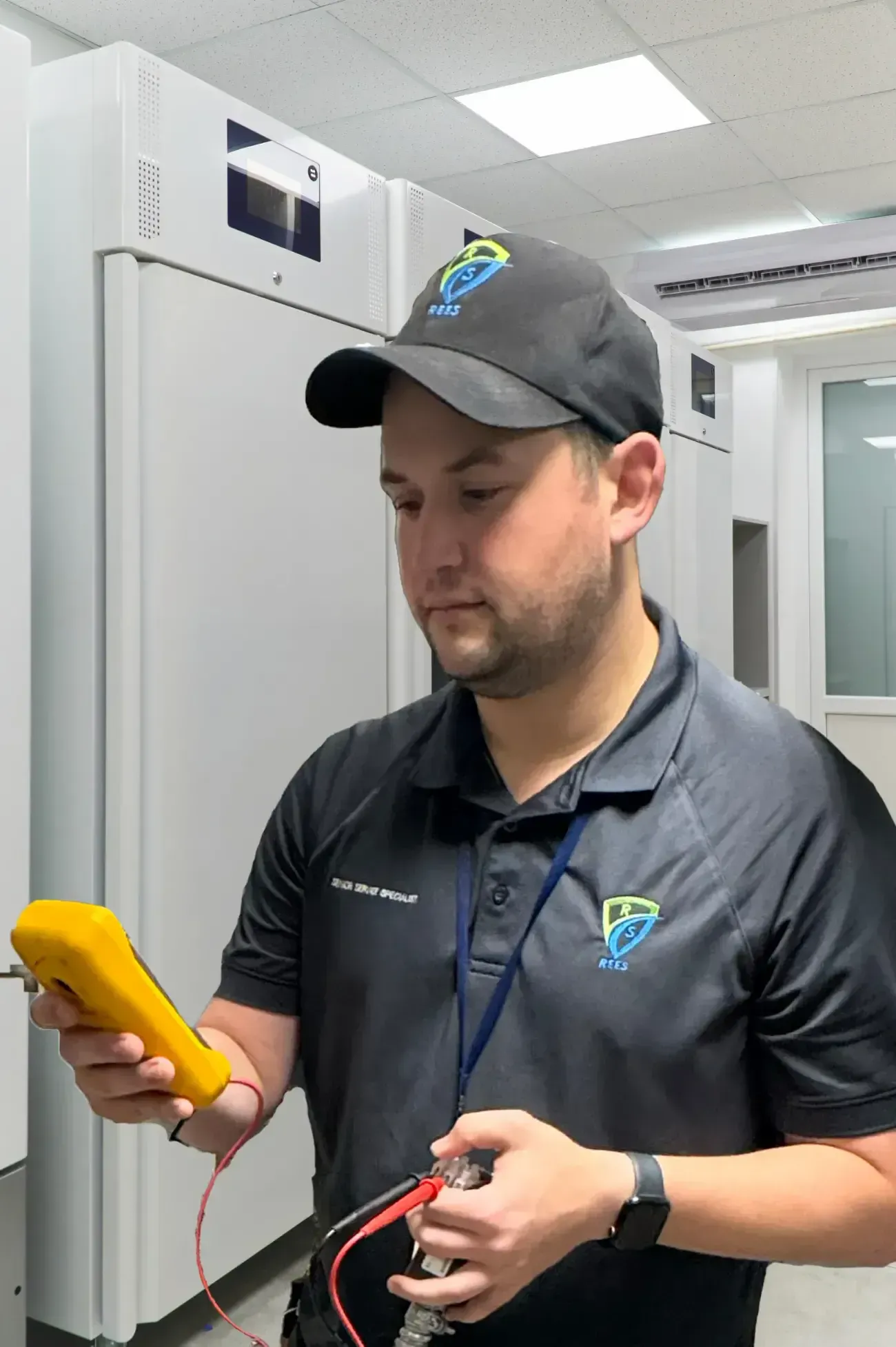In many industries—especially those governed by GxP guidelines like pharmaceuticals, biotechnology, healthcare, and research—accurate temperature control is critical. Controlled Temperature Units (CTUs) such as refrigerators, freezers, and incubators are essential for storing temperature-sensitive materials safely. Additionally, Environmental Monitoring Systems (EMS) provide continuous tracking of environmental factors, ensuring that controlled environments stay within required parameters. Calibrating both CTUs and EMS devices regularly is essential for compliance, product integrity, and overall operational efficiency.
Why Regular Calibration is Necessary for CTUs and EMS Calibration ensures that both CTUs and EMS sensors maintain accuracy in line with industry standards. By regularly calibrating these systems, organizations can achieve:
- Enhanced Product Safety and Integrity: Accurate CTUs preserve the integrity of temperature-sensitive items like pharmaceuticals and clinical samples. Meanwhile, EMS provides a continuous view of environmental stability, offering early warnings for any deviations that could compromise product safety.
- Regulatory Compliance: Regulatory agencies like the FDA, CDC, and WHO mandate regular calibration of CTUs and EMS to ensure compliance with Good Manufacturing Practices (GMP) and Good Laboratory Practices (GLP). Inaccurate calibration can lead to non-compliance, risking regulatory actions and fines.
- Efficient Operation and Cost Savings: Calibrated CTUs and EMS systems reduce the risk of equipment malfunctions, spoilage of materials, and compliance-related costs. Accurate readings also help extend the life of storage equipment and monitoring devices by reducing wear and tear.
The Two-in-One Approach: Calibrating CTUs and EMS Together For facilities that use both CTUs and EMS, calibrating both systems in tandem has several benefits:
- Streamlined Compliance Documentation: Having a unified calibration schedule for both CTUs and EMS means that facilities can keep comprehensive and synchronized records for audits.
- Operational Efficiency: With both CTUs and EMS calibrated simultaneously, facilities can minimize interruptions and prevent gaps in temperature control.
- Enhanced Data Accuracy Across Systems: Dual calibration ensures that both the storage units (CTUs) and monitoring systems (EMS) work in concert, providing reliable data that supports efficient and compliant operations.
Understanding the Calibration Process for CTUs and EMS The calibration process for CTUs and EMS devices typically follows these essential steps:
- Assessment and Preparation: Each calibration session begins with an assessment of the device’s current performance, comparing its readings to known standards.
- Calibration of Critical Parameters: For CTUs, temperature is the primary parameter, while EMS devices may also measure humidity and other factors. During calibration, specialized equipment adjusts the readings to ensure that they meet or exceed regulatory standards.
- Data Verification and Documentation: After calibration, each device is verified for accuracy, and a certificate is issued, documenting the process and results. This documentation is crucial for GxP audit readiness, ensuring facilities have the records needed to demonstrate compliance.
Benefits of Dual Calibration for Controlled Environments Implementing a dual calibration strategy for both CTUs and EMS yields several key benefits:
- Assured Compliance Across Systems: Calibration of both systems ensures that facilities meet GxP requirements holistically, helping organizations avoid issues in inspections.
- Increased Reliability in Temperature Control: Regularly calibrated CTUs and EMS reduce the risk of temperature fluctuations that can compromise sensitive materials.
- Simplified Maintenance Schedules: Calibrating both systems at once helps facilities manage their equipment maintenance more effectively, reducing administrative and logistical burdens.
In GxP-regulated industries, calibrating both CTUs and EMS regularly ensures that facilities meet the highest standards for safety, compliance, and operational efficiency. By adopting a dual calibration approach, organizations can maintain a streamlined, compliant, and reliable control environment, helping to protect their sensitive materials and achieve seamless regulatory compliance.
If you're interested in exploring how dual calibration for both CTUs and EMS can support your facility’s needs, Rees Scientific provides specialized expertise and industry-leading support to ensure your systems operate at peak accuracy. Contact us today to learn more about our calibration solutions.
https://reesscientific.com/compliance/calibration
